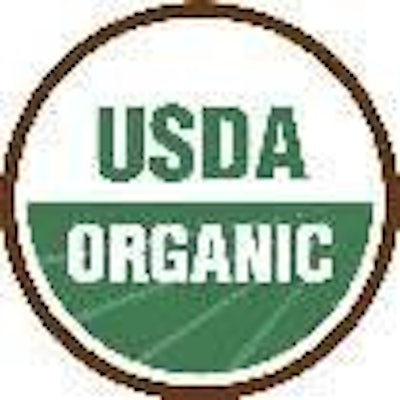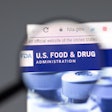
The organic petfood market has grown considerably over the past decade. Admittedly, when I first was introduced to the concept, I wasn't convinced that many pet owners would be willing to pay the significantly higher costs associated with organic production compared to its less tangible benefits. It is now clear that a significant segment of the public finds organic petfoods to be an attractive offering. However, a recent directive by the US Department of Agriculture National Organic Program may adversely impact this growing market.
Presently, organic food regulations under NOP apply only to foods for human consumption and livestock feeds. The rules for livestock feeds were very important to establish early in the process, since animals intended to be the sources of organic meat, milk and eggs for human consumption must be fed organic feed. Establishing rules for organic petfoods, however, has been considered by NOP to be a less critical need.
Unfortunately, neither the existing regulations for human foods nor those for livestock feeds are a good fit when it comes to petfoods, making compliance with the rules confusing at best. At first, USDA told the Association of American Feed Control Officials in a 2002 letter that the organic regulations would apply. A couple of years later, it issued a statement saying products that were not subject to specifically applicable USDA regulations (including petfoods) could not bear the USDA Organic Seal or otherwise imply compliance with the organic regulations--only to rescind that statement soon after.
In 2006, a task force under the National Organic Standards Board made recommendations to amend the organic livestock feed regulations to include petfood-specific rules. At the time, I had a few comments I believed would improve the draft regulations, but in general I thought they were appropriate and sorely needed. While NOSB accepted the recommendations of the task force in 2008, there has not appeared to be any further action on the part of NOP to promulgate these new regulations.
Although NOP's 2002 letter to AAFCO is not clear on this point, the implication has always been that organic petfoods needed to follow the human food rules. In practice, though, there appeared to be some wiggle room, particularly with regard to including vitamins and minerals.
To be certified as organic, all synthetic ingredients in foods or feeds must be expressly on the National List. The list allows inclusion of Food and Drug Administration approved vitamins and minerals for livestock feeds, but historically certifiers did not appear to have any consternation in extending the provision for use of these ingredients in petfoods as well. There remained issues with nutrients that were neither vitamins nor minerals (e.g., taurine), but for the most part there have been minimal problems with selling a complete and balanced organic petfood.
However, in a new public comment from NOP, it notes that pets are not livestock; hence, petfoods may not in any fashion be certified under the livestock feed rules. Unfortunately, the only reference to permissible micronutrients in the human food rules is an FDA regulation that is specific to human foods. Thus, NOP concludes that neither the vitamins and minerals permitted in organic human foods nor those in livestock feeds are acceptable for use in organic petfoods. So, any petfood containing added vitamins and minerals cannot be certified.
This ruling is not an issue for non-fortified snacks and treats, but is a major problem for complete and balanced products. While it is technically possible to formulate a complete and balanced petfood without the use of synthetic micronutrients, it is extremely difficult in practice, and because of normal variability in incoming ingredients, the resulting product may not consistently meet AAFCO requirements for nutritional adequacy. Essentially, then, this finding by NOP virtually eliminates the possibility of certifying a complete and balanced petfood as organic.
A major organic certifier indicates in a letter to a petfood manufacturer that products must be brought into compliance by September or their certification will be revoked. The certifiers are not to blame. They must comply with NOP's directives or risk facing severe penalties themselves (including loss of accreditation).
As I understand it, efforts are being made by trade associations to get NOP to reconsider this ruling, and hopefully, the matter will be resolved soon. However, unless and until new petfood-specific organic rules are enacted, these types of issues are bound to recur.



















